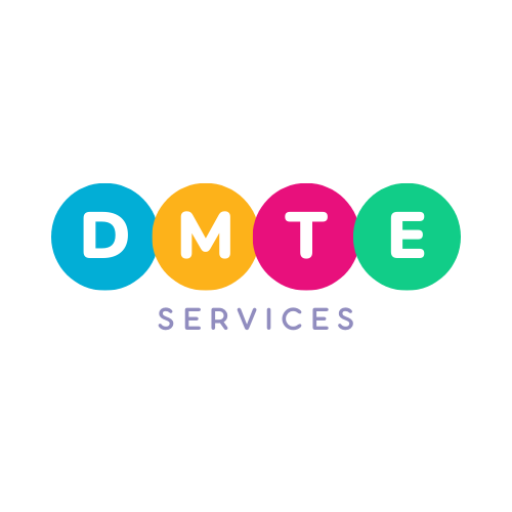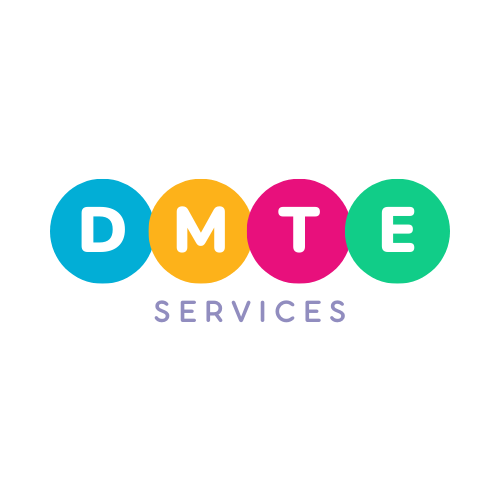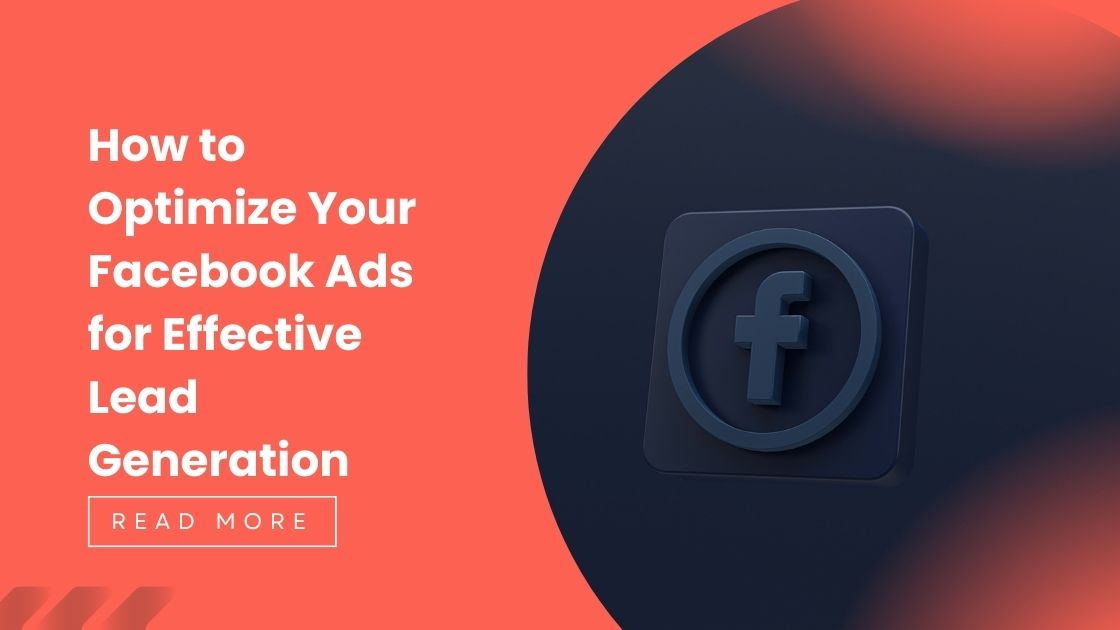How to Optimize Your Facebook Ads for Effective Lead Generation
Lead generation is the process of attracting and converting potential customers into leads, or people who have shown interest in your products or services. Lead generation is crucial for businesses because it helps them build relationships with their prospects, increase their brand awareness, and boost their sales.
One of the most powerful and popular ways to generate leads is by using Facebook ads. Facebook ads allow you to reach a large and diverse audience of over 2.8 billion monthly active users, who spend an average of 34 minutes per day on the platform. Facebook ads also offer you various options to customize your campaigns, target your ideal customers, and optimize your results.
In this blog post, we will show you how to optimize your Facebook ads for effective lead generation. We will cover the following topics:
- How to set up your Facebook ads account for lead generation
- How to choose your target audience for your Facebook lead ads
- How to design your Facebook lead ads creatives
- How to create your Facebook lead form
- How to track and measure your Facebook lead ads performance
- How to follow up with your Facebook leads
By the end of this blog post, you will have a clear and comprehensive guide on how to use Facebook ads to generate leads for your business.
How to Set Up Your Facebook Ads Account for Lead Generation
Before you can start creating your Facebook lead ads, you need to set up your Facebook ads account properly. There are two main tools that you will use to manage your Facebook ads: the Facebook Ads Manager and the Facebook Business Manager.
The Facebook Ads Manager is where you create, edit, and monitor your Facebook ad campaigns. The Facebook Business Manager is where you organize and manage your business assets, such as your Facebook pages, ad accounts, pixels, catalogs, and more.
To set up your Facebook ads account for lead generation, you need to do the following steps:
- To use Facebook Business Manager, you need to set up an account first. Visit business.facebook.com and follow the steps there.
- Link your Facebook page to your Business Manager account. You can do this by going to the Business Settings in your Business Manager account and adding your page under the Pages section.
- Access the Facebook Ads Manager from your Business Manager account. You can do this by clicking on the Ads Manager button on the top right corner of your Business Manager dashboard.
- Choose the Lead Generation objective for your campaign. You can do this by clicking on the Create button in your Ads Manager and selecting the Lead Generation option under the Consideration column.
- Fill in the basic settings and options for your campaign, such as the campaign name, budget, schedule, audience, placement, optimization, and delivery.
Once you have set up your Facebook ads account for lead generation, you are ready to design your Facebook lead ads creatives and create your Facebook lead form. We will cover these topics in the next sections of this blog post.
How to Choose Your Target Audience for Your Facebook Lead Ads
One of the most important factors for optimizing your Facebook ads for effective lead generation is choosing the right target audience. You want to reach people who are interested in your products or services, and who are likely to become your leads and customers.
To help you find your ideal target audience, you can use the Audience Network tool in your Facebook Ads Manager. The Audience Network tool allows you to explore and discover potential customers based on their demographics, interests, behaviors, and more.
There are three main types of audience network options that you can use for your Facebook lead ads:
- Custom audience: A custom audience is a group of people who have already interacted with your business, such as your website visitors, email subscribers, app users, or Facebook fans. You can create a custom audience by uploading your customer data, using the Facebook pixel, or using the Facebook SDK.
- Lookalike audience: A lookalike audience is a group of people who are similar to your existing customers or leads. You can create a lookalike audience by using a custom audience as a source, and choosing a percentage of similarity and a location.
- Saved audience: A saved audience is a group of people who match the criteria that you define, such as age, gender, location, interests, etc. You can create a saved audience by using the detailed targeting options in the Audience Network tool.
To choose the best audience network option for your campaign, you need to consider your campaign objective, your budget, and your audience size. Here are some tips and best practices for creating your target audience for your Facebook lead ads:
- Use a custom audience if you want to retarget people who have already shown interest in your business, and who are more likely to convert into leads.
- Use a lookalike audience if you want to expand your reach and find new people who are similar to your best customers or leads.
- Use a saved audience if you want to target people based on specific criteria that are relevant to your business, and who are likely to be interested in your offer.
- Test and optimize your audience network options to find the best combination of reach, relevance, and results.
How to Design Your Facebook Lead Ads Creatives
The creatives of your Facebook lead ads are the visual and textual elements that capture the attention and interest of your target audience. You want to design your creatives in a way that showcases your offer, communicates your value proposition, and encourages your prospects to take action.
There are different types of creatives that you can use for your Facebook lead ads, depending on your campaign objective, budget, and audience preference. These include:
- Images: Images are the simplest and most common type of creatives for Facebook lead ads. You can use a single image or a carousel of up to 10 images to display your offer and brand.
- Videos: Videos are more engaging and dynamic than images, and can help you tell a story, demonstrate a product, or educate your audience. You can use a single video or a slideshow of up to 10 video clips to create your video creative.
- Collections: Collections are a type of immersive creative that allow you to showcase multiple products or features in a single ad. You can use a collection to create a catalog-style or a lifestyle-style creative that opens into a full-screen experience when clicked.
To create and test your Facebook lead ads creatives, you can use the Creative Hub tool in your Facebook Ads Manager. The Creative Hub tool allows you to:
- Explore and get inspired by different types of creatives from various industries and categories
- Create and preview your own creatives using the mockup tool and the mobile device emulator
- Test and compare your creatives using the split testing tool and the performance metrics
To design effective and engaging creatives for your Facebook lead ads, here are some tips and best practices that you should follow:
- Use high-quality images or videos that are relevant to your offer and audience
- Use clear and concise copy that highlights the benefits and urgency of your offer
- Use strong call-to-action buttons that match your campaign objective and lead form
- Use consistent branding and colors that align with your website and landing page
- Optimize your creatives for different placements and devices, such as desktop, mobile, or Instagram
By following these tips and best practices, you can design your Facebook lead ads creatives that will attract and convert your target audience into leads.
How to Create Your Facebook Lead Form
The lead form is the part of your Facebook lead ad that collects the information of your prospects. The lead form consists of a form title, an introduction, one or more questions, a privacy policy, and a thank you screen.
To create your Facebook lead form, you can use the Lead Form Builder tool in your Facebook Ads Manager. The Lead Form Builder tool allows you to:
- Choose a form type, either More Volume or Higher Intent, depending on your campaign goal and audience preference
- Add a form title that summarizes your offer and value proposition
- Add an introduction that explains the benefits and details of your offer
- Add one or more questions that ask for the information that you need from your prospects, such as name, email, phone number, etc. You can use the predefined questions or create your own custom questions
- Add a privacy policy that links to your website’s privacy policy and complies with the Facebook Lead Ads Terms of Service
- Add a thank you screen that confirms the submission of the form and provides a clear and compelling call-to-action for the next step
To create a user-friendly and high-converting lead form, here are some tips and best practices that you should follow:
- Use fewer fields to reduce the friction and increase the completion rate of your form
- Use the pre-filled fields option to automatically populate the information that Facebook already has from the user’s profile
- Use the conditional fields option to show or hide questions based on the user’s previous answers
- Use the context card option to provide more information and reassurance to the user before they fill out the form
- Use the custom disclaimer option to add any additional terms or disclosures that are relevant to your offer or industry
- Customize the look and feel of your form to match your brand identity and style
By following these tips and best practices, you can create your Facebook lead form that will collect the information of your target audience and turn them into leads for your business.
How to Track and Measure Your Facebook Lead Ads Performance
Once you have created and launched your Facebook lead ads, you need to track and measure their performance to see how well they are achieving your lead generation goals. Tracking and measuring your Facebook lead ads performance will help you understand the effectiveness of your campaigns, identify the areas of improvement, and optimize your results.
To track and measure your Facebook lead ads performance, you can use the Facebook Pixel and the Conversions API. The Facebook Pixel is a piece of code that you install on your website or landing page to track the actions of your visitors, such as filling out a form, downloading a file, or making a purchase. The Conversions API is a tool that allows you to send data from your server to Facebook, such as offline conversions, phone calls, or in-store purchases.
By using the Facebook Pixel and the Conversions API, you can track and attribute the leads that you generate from your Facebook lead ads, and measure the return on ad spend (ROAS) of your campaigns.
There are different types of metrics and reports that you can use to track and measure your Facebook lead ads performance, such as:
- Impressions: The number of times your ad was shown to your target audience
- Clicks: The number of times your ad was clicked by your target audience
- Leads: The number of leads that you collected from your Facebook lead form
- Cost per lead: The average amount that you spent to acquire each lead
- Lead-to-customer rate: The percentage of leads that converted into customers
- Customer lifetime value: The estimated revenue that each customer will generate for your business over time
To access these metrics and reports, you can use the Ads Manager dashboard, the Insights tool, or the Analytics tool in your Facebook Ads Manager.
To analyze and optimize your Facebook lead ads performance, here are some tips and best practices that you should follow:
- Use split testing to compare different versions of your campaigns, such as the audience, the creative, the form, or the placement, and see which one performs better
- Use custom conversions to define and track the specific actions that you want your leads to take after submitting the form, such as visiting a specific page, signing up for a trial, or making a purchase
- Use automated rules to set up conditions and actions for your campaigns, such as increasing the budget, pausing the ad, or sending a notification, based on the performance metrics that you specify
By following these tips and best practices, you can track and measure your Facebook lead ads performance and optimize your campaigns for effective lead generation.
How to Follow Up with Your Facebook Leads
Generating leads from your Facebook ads is only the first step of your lead generation process. The next and crucial step is to follow up with your Facebook leads and nurture them into customers. Following up with your Facebook leads will help you build trust and rapport with them, educate them about your products or services, and persuade them to take action.
To follow up with your Facebook leads, you need to access and download their information from your Facebook account. You can do this by using the Leads Center or the Facebook Page tools in your Facebook Ads Manager. The Leads Center tool allows you to view, filter, and export your leads in a CSV file. The Facebook Page tool allows you to sync your leads with your CRM system, such as Mailchimp, HubSpot, or Salesforce.
There are different ways to follow up with your Facebook leads, depending on your campaign objective, budget, and audience preference. These include:
- Email: Email is one of the most common and effective ways to follow up with your Facebook leads. You can use email to send welcome messages, newsletters, offers, testimonials, case studies, or webinars to your leads.
- Phone: Phone is another powerful way to follow up with your Facebook leads. You can use phone to make personal connections, qualify your leads, answer their questions, or schedule appointments or demos with them.
- SMS: SMS is a fast and convenient way to follow up with your Facebook leads. You can use SMS to send reminders, confirmations, updates, or surveys to your leads.
- Messenger: Messenger is a social and interactive way to follow up with your Facebook leads. You can use Messenger to chat with your leads, send them images, videos, or audio messages, or use chatbots to automate your conversations.
To follow up with your Facebook leads effectively, here are some tips and best practices that you should follow:
- Use a CRM system to manage and segment your leads, and to automate your follow-up campaigns
- Personalize your messages with your leads’ names, interests, or pain points
- Provide value and incentives to your leads, such as free trials, discounts, or bonuses
- Follow up with your leads promptly and consistently, and don’t spam them with too many messages
- Track and measure your follow-up performance, and optimize your messages based on the feedback and results
By following these tips and best practices, you can follow up with your Facebook leads and convert them into loyal customers for your business.
Conclusion
This blog post has taught you how to optimize your Facebook ads for effective lead generation. You have learned the following topics:
- How to set up your Facebook ads account for lead generation
- How to choose your target audience for your Facebook lead ads
- How to design your Facebook lead ads creatives
- How to create your Facebook lead form
- How to track and measure your Facebook lead ads performance
- How to follow up with your Facebook leads
By applying these steps, you can use Facebook ads to generate leads for your business, and turn them into loyal customers. Facebook ads are a powerful and popular way to reach a large and diverse audience, and to offer them value and solutions.
If you want to learn more about how to optimize your Facebook ads for effective lead generation, or if you need help with creating and managing your Facebook lead ads campaigns, we are here to help. Contact us today and get a free consultation with our Facebook ads experts. We are a leading lead generation agency in delhi, and we have the experience and expertise to help you create and optimize your Facebook lead ads campaigns, and achieve your lead generation goals.


